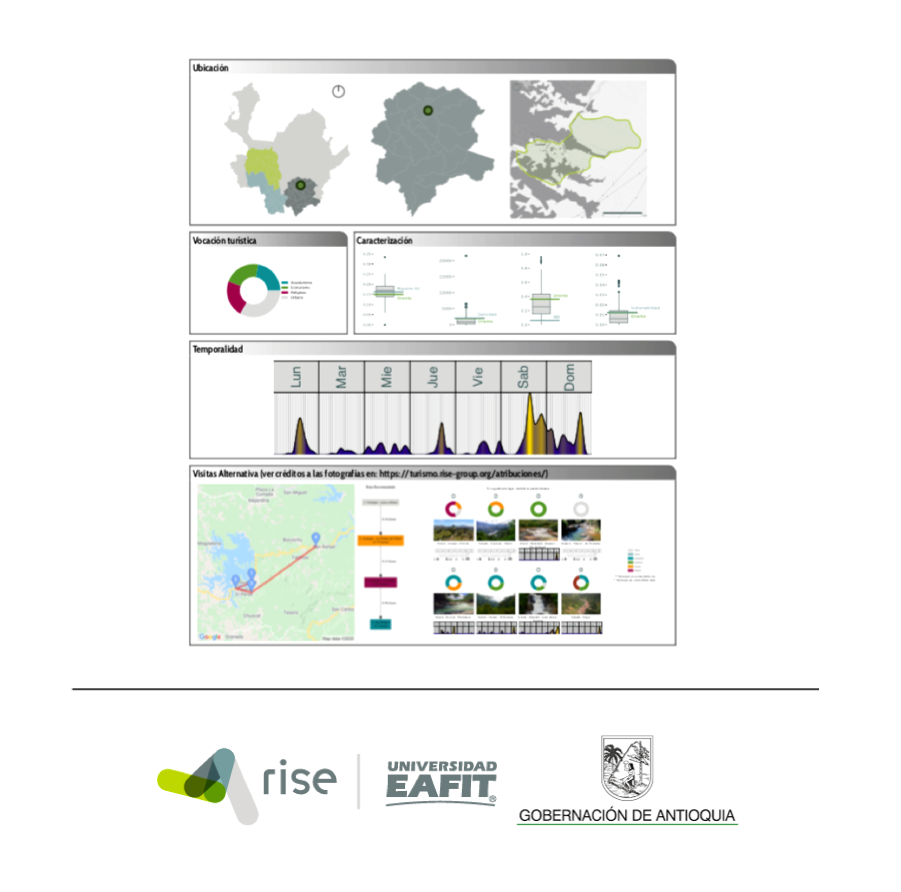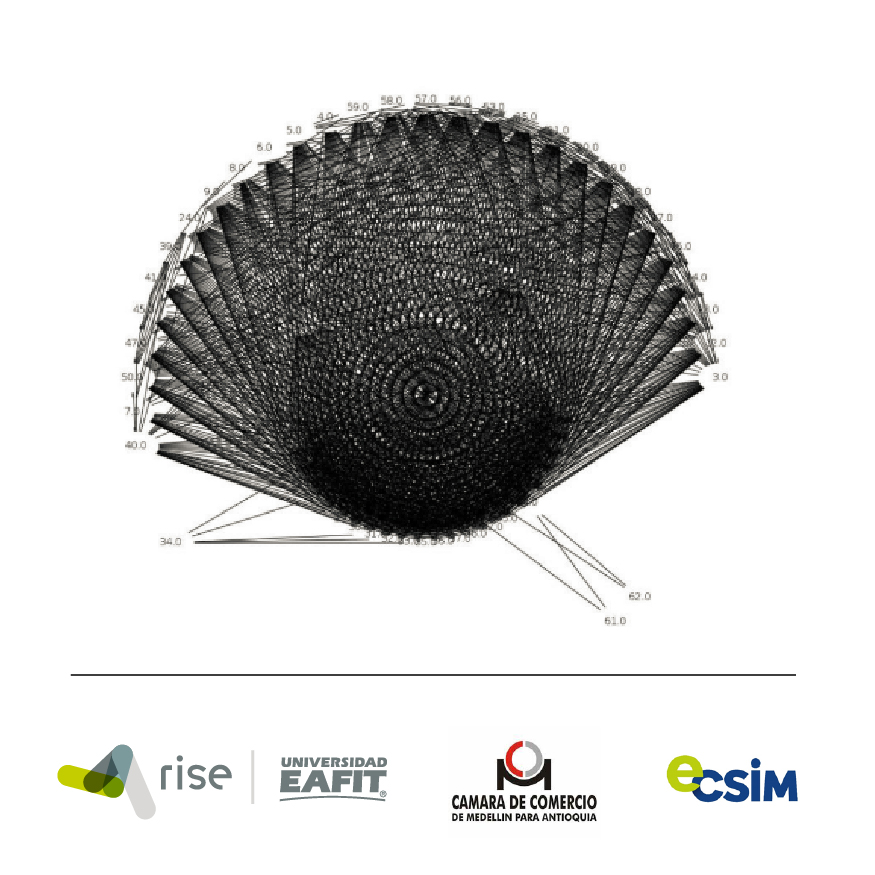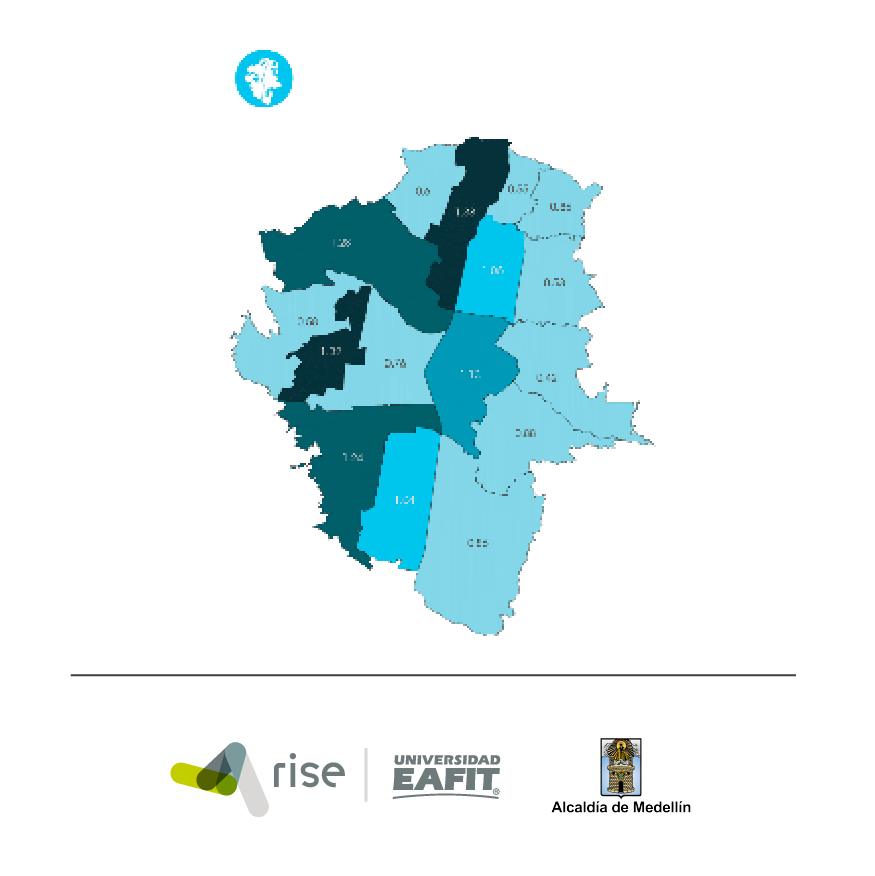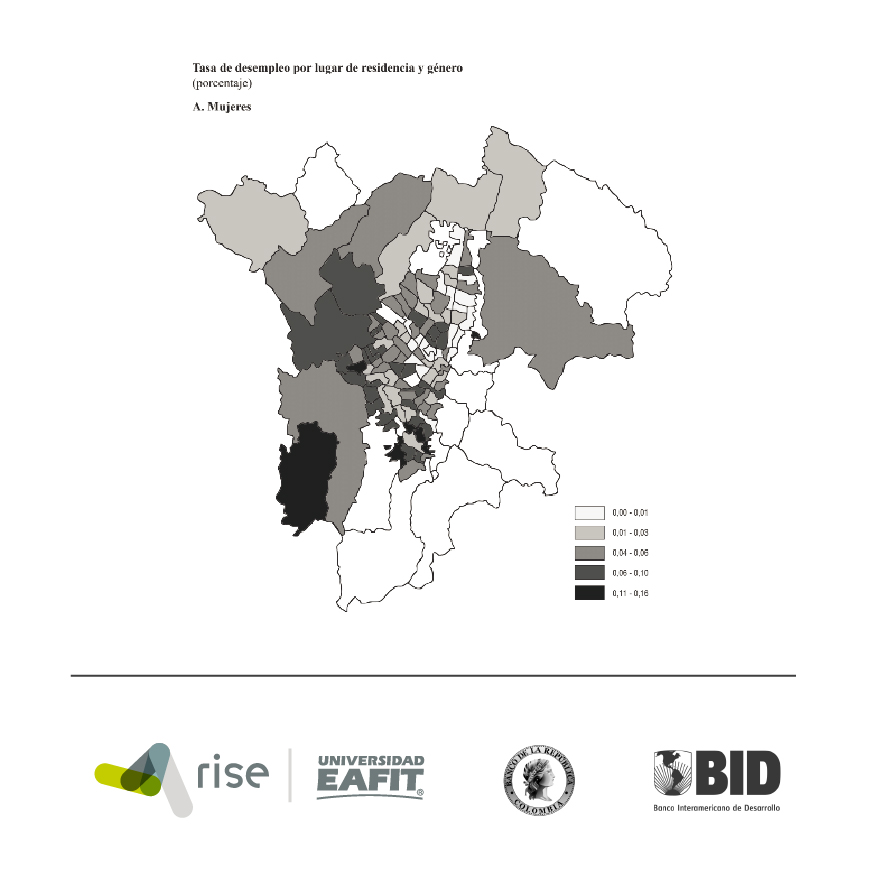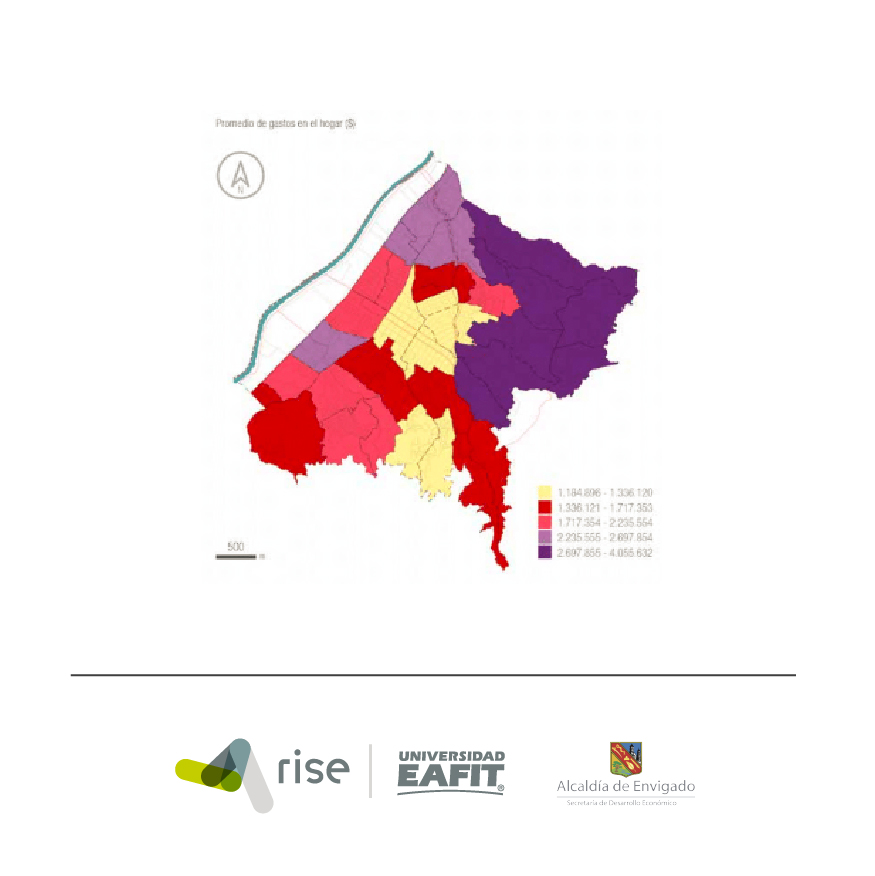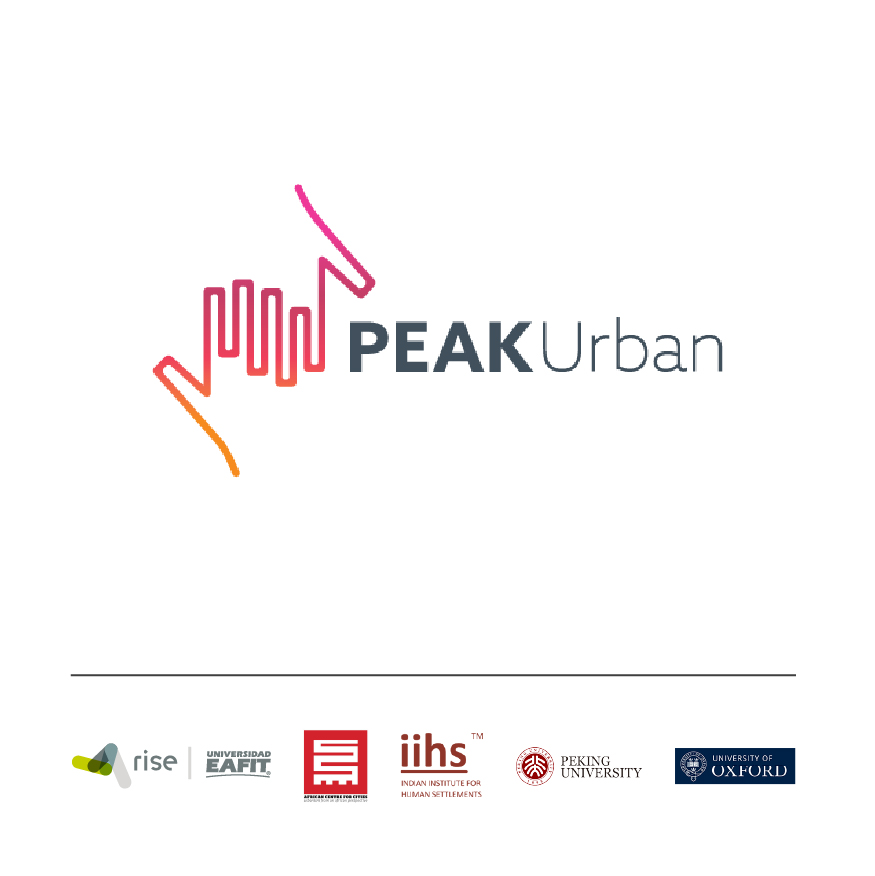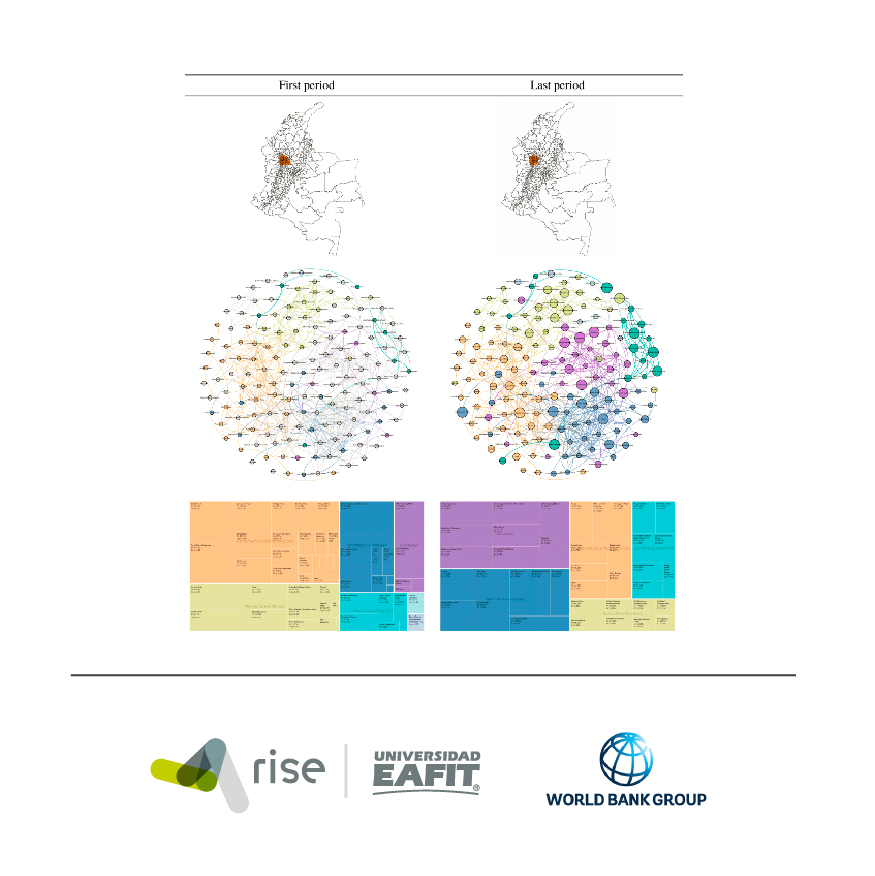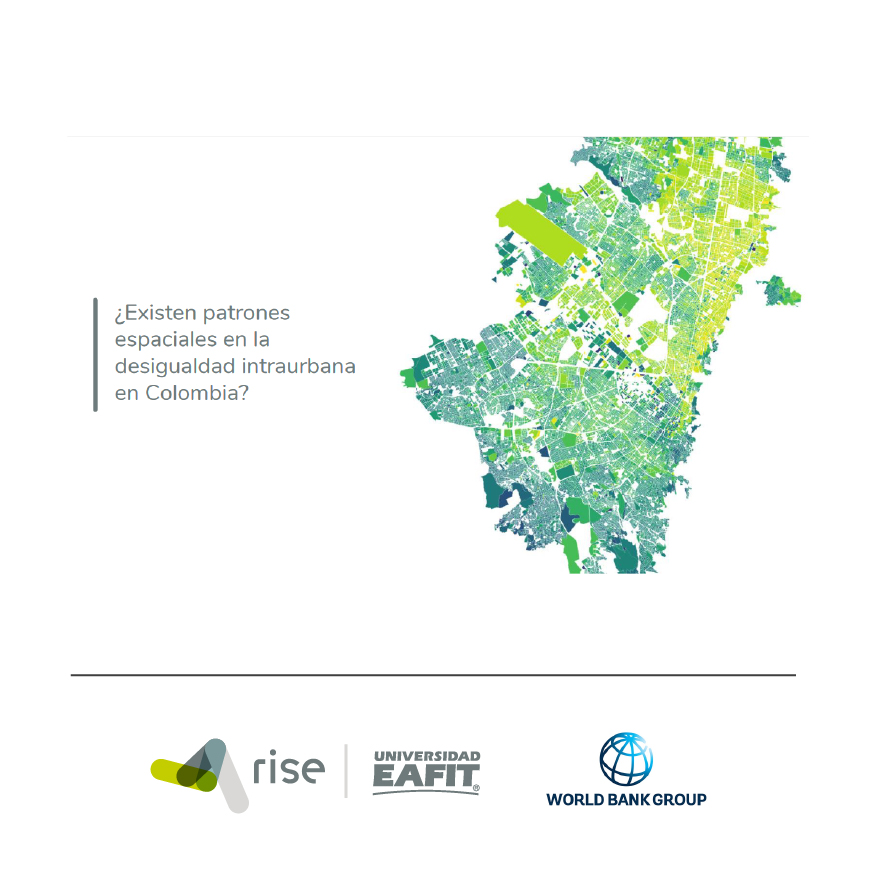Artículos de revista
|
2021
|
Hong A., Martínez Patino Duque Rahimi L M J E J C K Neighbourhood green space and health disparities in the global South: Evidence from Cali, Colombia Artículo de revista Health and Place, 72 (102690), pp. 1-9, 2021, ISSN: 1353-8292. Resumen | Enlaces | BibTeX | Etiquetas: ODS 11, Sostenibilidad de ciudades @article{HongMartinezEtal2021,
title = {Neighbourhood green space and health disparities in the global South: Evidence from Cali, Colombia},
author = {Hong, A., Martínez L.M., Patino J.E., Duque J.C., Rahimi K.},
editor = {Elsevier},
doi = {10.1016/j.healthplace.2021.102690},
issn = {1353-8292},
year = {2021},
date = {2021-10-04},
journal = {Health and Place},
volume = {72},
number = {102690},
pages = {1-9},
abstract = {Increasing attention has been given to the role of green space in reducing health disparities. However, robust evidence to support decision making is lacking in the global South. We investigate the relationship between green space and health as well as its underlying mechanism in Cali, Colombia. Results indicate that neigh- bourhood greenness is associated with enhanced self-rated ‘good’ health and reduced physical and mental distress. The health benefits of green space appear to be stronger for people living in wealthier neighbourhoods than those in poor neighbourhoods. Results highlight the importance of considering health disparities for future green infrastructure planning in the global South context.},
keywords = {ODS 11, Sostenibilidad de ciudades},
pubstate = {published},
tppubtype = {article}
}
Increasing attention has been given to the role of green space in reducing health disparities. However, robust evidence to support decision making is lacking in the global South. We investigate the relationship between green space and health as well as its underlying mechanism in Cali, Colombia. Results indicate that neigh- bourhood greenness is associated with enhanced self-rated ‘good’ health and reduced physical and mental distress. The health benefits of green space appear to be stronger for people living in wealthier neighbourhoods than those in poor neighbourhoods. Results highlight the importance of considering health disparities for future green infrastructure planning in the global South context. |
Quiñones, M; L.M., Martínez; J.C., Duque; O., Mejía A targeting policy for tackling inequality in the developing world: Lessons learned from the system of cross-subsidies to fund utilities in Colombia Artículo de revista Cities, 116 (103306), pp. 4, 2021, ISSN: 0264-2751. Resumen | Enlaces | BibTeX | Etiquetas: Ciudades y su economía, ODS 11 @article{Quinonez_2021,
title = {A targeting policy for tackling inequality in the developing world: Lessons learned from the system of cross-subsidies to fund utilities in Colombia},
author = {Quiñones, M. and Martínez L.M. and Duque J.C. and Mejía O.},
editor = {Elseviere},
url = {https://authors.elsevier.com/c/1dFxZy5jOjTPJ},
doi = {10.1016/j.cities.2021.103306},
issn = {0264-2751},
year = {2021},
date = {2021-06-17},
journal = {Cities},
volume = {116},
number = {103306},
pages = {4},
abstract = {This paper contributes to the discussion on policies for providing utilities and on their contribution to reducing inequality. The uniqueness of the Colombian scheme to target subsidy beneficiaries and contributors provides valuable lessons for policymakers, academics, and urban planners regarding the difficulties and implications of such a segmenting government intervention in countries of the Global South. Among the unintended consequences of the scheme are deepening spatial segregation, distorted economic incentives, and poor correspondence of the welfare system with stratification categories.},
keywords = {Ciudades y su economía, ODS 11},
pubstate = {published},
tppubtype = {article}
}
This paper contributes to the discussion on policies for providing utilities and on their contribution to reducing inequality. The uniqueness of the Colombian scheme to target subsidy beneficiaries and contributors provides valuable lessons for policymakers, academics, and urban planners regarding the difficulties and implications of such a segmenting government intervention in countries of the Global South. Among the unintended consequences of the scheme are deepening spatial segregation, distorted economic incentives, and poor correspondence of the welfare system with stratification categories. |
Duque, Juan C; Lozano-Gracia, Nancy ; Patiño, Jorge E; Restrepo, Paula Urban form and productivity: What shapes are Latin-American cities? Artículo de revista Environment and Planning B: Urban Analytics and City Science, 8697 , pp. 20, 2021, ISBN: 2399-8083. Resumen | Enlaces | BibTeX | Etiquetas: Ciudades y su economía, ODS 11 @article{duque_productivity_2021,
title = {Urban form and productivity: What shapes are Latin-American cities?},
author = {Duque, Juan C. and Lozano-Gracia, Nancy and Patiño, Jorge E. and Restrepo, Paula},
editor = {Sage},
url = {https://doi.org/10.1177/2399808321999309},
doi = {10.1177/2399808321999309},
isbn = {2399-8083},
year = {2021},
date = {2021-03-08},
journal = {Environment and Planning B: Urban Analytics and City Science},
volume = {8697},
pages = {20},
abstract = {This paper examines the linkages between urban form and city productivity using seven alternative metrics for urban form and applying them to a comprehensive sample of Latin-American cities. While most of the literature has concentrated on the effects of population density (compact vs. sprawling urban development), this paper seeks to assess whether different dimensions of a city’s urban form, such as shape, structure, and land use, affect its economic performance. We found that both the shape of the urban extent and the inner-city connectedness have a statistically significant association with the productivity level of a city.},
keywords = {Ciudades y su economía, ODS 11},
pubstate = {published},
tppubtype = {article}
}
This paper examines the linkages between urban form and city productivity using seven alternative metrics for urban form and applying them to a comprehensive sample of Latin-American cities. While most of the literature has concentrated on the effects of population density (compact vs. sprawling urban development), this paper seeks to assess whether different dimensions of a city’s urban form, such as shape, structure, and land use, affect its economic performance. We found that both the shape of the urban extent and the inner-city connectedness have a statistically significant association with the productivity level of a city. |
Prieto-Curiel, Rafael ; Patiño, Jorge E; Duque, Juan C; O'Cleary, Neave The heartbeat of the city Artículo de revista Plos One, 16 (2), pp. 30, 2021, ISBN: 1932-6203. Resumen | Enlaces | BibTeX | Etiquetas: crimen, ODS 11, Transporte en ciudades del sur global @article{prieto_heartbeat_2021,
title = {The heartbeat of the city},
author = {Prieto-Curiel, Rafael and Patiño, Jorge E. and Duque, Juan C. and O'Cleary, Neave},
url = {https://doi.org/10.1371/journal.pone.0246714},
doi = {10.1371/journal.pone.0246714},
isbn = {1932-6203},
year = {2021},
date = {2021-02-24},
journal = {Plos One},
volume = {16},
number = {2},
pages = {30},
abstract = {Human activity is organised around daily and weekly cycles, which should, in turn, dominate all types of social interactions, such as transactions, communications, gatherings and so on. Yet, despite their strategic importance for policing and security, cyclical weekly patterns in crime and road incidents have been unexplored at the city and neighbourhood level. Here we construct a novel method to capture the weekly trace, or “heartbeat” of events and use geotagged data capturing the time and location of more than 200,000 violent crimes and nearly one million crashes in Mexico City. On aggregate, our findings show that the heartbeats of crime and crashes follow a similar pattern. We observe valleys during the night and peaks in the evening, where the intensity during a peak is 7.5 times the intensity of valleys in terms of crime and 12.3 times in terms of road accidents. Although distinct types of events, crimes and crashes reach their respective intensity peak on Friday night and valley on Tuesday morning, the result of a hyper-synchronised society. Next, heartbeats are computed for city neighbourhood ‘tiles’, a division of space within the city based on the distance to Metro and other public transport stations. We find that heartbeats are spatially heterogeneous with some diffusion, so that nearby tiles have similar heartbeats. Tiles are then clustered based on the shape of their heartbeat, e.g., tiles within groups suffer peaks and valleys of crime or crashes at similar times during the week. The clusters found are similar to those based on economic activities. This enables us to anticipate temporal traces of crime and crashes based on local amenities.},
keywords = {crimen, ODS 11, Transporte en ciudades del sur global},
pubstate = {published},
tppubtype = {article}
}
Human activity is organised around daily and weekly cycles, which should, in turn, dominate all types of social interactions, such as transactions, communications, gatherings and so on. Yet, despite their strategic importance for policing and security, cyclical weekly patterns in crime and road incidents have been unexplored at the city and neighbourhood level. Here we construct a novel method to capture the weekly trace, or “heartbeat” of events and use geotagged data capturing the time and location of more than 200,000 violent crimes and nearly one million crashes in Mexico City. On aggregate, our findings show that the heartbeats of crime and crashes follow a similar pattern. We observe valleys during the night and peaks in the evening, where the intensity during a peak is 7.5 times the intensity of valleys in terms of crime and 12.3 times in terms of road accidents. Although distinct types of events, crimes and crashes reach their respective intensity peak on Friday night and valley on Tuesday morning, the result of a hyper-synchronised society. Next, heartbeats are computed for city neighbourhood ‘tiles’, a division of space within the city based on the distance to Metro and other public transport stations. We find that heartbeats are spatially heterogeneous with some diffusion, so that nearby tiles have similar heartbeats. Tiles are then clustered based on the shape of their heartbeat, e.g., tiles within groups suffer peaks and valleys of crime or crashes at similar times during the week. The clusters found are similar to those based on economic activities. This enables us to anticipate temporal traces of crime and crashes based on local amenities. |
|
|
2021
|
Patiño, Jorge E; Hong, Andy ; Duque, Juan C; Rahimi, Kazem ; Zapata, Silvana ; Lopera, Verónica M ¿Qué es lo que hace que el entorno urbano sea saludable en Colombia? Informe técnico RiSE-group (3), 2021. Resumen | Enlaces | BibTeX | Etiquetas: briefings, ODS 11, Sostenibilidad de ciudades @techreport{peak_briefing_3s,
title = {¿Qué es lo que hace que el entorno urbano sea saludable en Colombia?},
author = {Patiño, Jorge E. and Hong, Andy and Duque, Juan C. and Rahimi, Kazem and Zapata, Silvana and Lopera, Verónica M.},
url = {https://www.rise-group.org/wp-content/uploads/2021/06/briefing_3sp.pdf
https://www.rise-group.org/wp-content/uploads/2021/06/briefing_3eng.pdf},
year = {2021},
date = {2021-06-24},
number = {3},
institution = {RiSE-group},
abstract = {Este informe presenta evidencia de investigaciones recientes sobre las relaciones existentes entre las características del entorno urbano y la mortalidad por enfermedades cardiovasculares y diabetes en Medellín, Colombia. Un mejor conocimiento de esas relaciones en el contexto de
las ciudades de países de ingresos medios y bajos puede incidir en mejores lineamientos de planeación urbana y con ello contribuir a disminuir la carga de las enfermedades no transmisibles en las ciudades de estos países.},
keywords = {briefings, ODS 11, Sostenibilidad de ciudades},
pubstate = {published},
tppubtype = {techreport}
}
Este informe presenta evidencia de investigaciones recientes sobre las relaciones existentes entre las características del entorno urbano y la mortalidad por enfermedades cardiovasculares y diabetes en Medellín, Colombia. Un mejor conocimiento de esas relaciones en el contexto de
las ciudades de países de ingresos medios y bajos puede incidir en mejores lineamientos de planeación urbana y con ello contribuir a disminuir la carga de las enfermedades no transmisibles en las ciudades de estos países. |
Ospina, Juan P; Botero-Fernandez, V; Duque, Juan C; Brussel, Mark ; Grigolon, Anna Movilidad Sostenible: ¿Qué tanta distancia viaja regularmente la gente de Medellín en bicicleta? Informe técnico RiSE-group (6), 2021. Enlaces | BibTeX | Etiquetas: bicicletas, ODS 11, peak_vision, Sostenibilidad de ciudades, Transporte en ciudades del sur global @techreport{peak_vision_6s,
title = {Movilidad Sostenible: ¿Qué tanta distancia viaja regularmente la gente de Medellín en bicicleta?},
author = {Ospina, Juan P. and Botero-Fernandez, V. and Duque, Juan C. and Brussel, Mark and Grigolon, Anna},
url = {https://www.rise-group.org/wp-content/uploads/2021/03/peak_vision_6s.pdf
https://www.rise-group.org/wp-content/uploads/2021/03/peak_vision_6e.pdf},
year = {2021},
date = {2021-02-01},
number = {6},
institution = {RiSE-group},
keywords = {bicicletas, ODS 11, peak_vision, Sostenibilidad de ciudades, Transporte en ciudades del sur global},
pubstate = {published},
tppubtype = {techreport}
}
|
2020
|
Mejía-Dugand, Santiago ; Pizarro-Castillo, Marcela Planificación territorial y ODS Informe técnico RiSE-group (4), 2020. Enlaces | BibTeX | Etiquetas: ODS 11, peak_vision @techreport{peak_vision_4s,
title = {Planificación territorial y ODS},
author = {Mejía-Dugand, Santiago and Pizarro-Castillo, Marcela},
url = {https://www.rise-group.org/wp-content/uploads/2021/01/peak_vision_4.pdf
https://www.rise-group.org/wp-content/uploads/2021/03/peak_vision_4e.pdf},
year = {2020},
date = {2020-10-06},
number = {4},
institution = {RiSE-group},
keywords = {ODS 11, peak_vision},
pubstate = {published},
tppubtype = {techreport}
}
|
Martínez, Lina ; Duque, Juan C Cali y Medellín: Las estrategias gubernamentales para la contención de la pandemia Informe técnico RiSE-group (3), 2020. Enlaces | BibTeX | Etiquetas: covid-19, ODS 10, ODS 11, peak_vision @techreport{peak_vision_3s,
title = {Cali y Medellín: Las estrategias gubernamentales para la contención de la pandemia},
author = {Martínez, Lina and Duque, Juan C.},
url = {https://www.rise-group.org/wp-content/uploads/2021/01/peak_vision_3.pdf},
year = {2020},
date = {2020-08-01},
number = {3},
institution = {RiSE-group},
keywords = {covid-19, ODS 10, ODS 11, peak_vision},
pubstate = {published},
tppubtype = {techreport}
}
|
Mejía-Dugand, Santiago ; Pizarro-Castillo, Marcela ; Croese, Sylvia ; Reddy, Shobha A Pandemia, Gobernanza y Participación Social. Investigación para promover la participación en tiempos de pandemia Informe técnico RiSe-group (1), 2020. Enlaces | BibTeX | Etiquetas: covid-19, ODS 11, ODS 16, peak_vision @techreport{peak_vision_1s,
title = {Pandemia, Gobernanza y Participación Social. Investigación para promover la participación en tiempos de pandemia},
author = {Mejía-Dugand, Santiago and Pizarro-Castillo, Marcela and Croese, Sylvia and Reddy, Shobha A.},
url = {https://www.rise-group.org/wp-content/uploads/2021/01/peak_vision_1.pdf
https://www.rise-group.org/wp-content/uploads/2021/03/peak_vision_1e.pdf},
year = {2020},
date = {2020-05-01},
number = {1},
institution = {RiSe-group},
keywords = {covid-19, ODS 11, ODS 16, peak_vision},
pubstate = {published},
tppubtype = {techreport}
}
|
Martínez, Lina ; Hong, Andy ; Patiño, Jorge E; Duque, Juan C; Rahimi, K Espacios Públicos Verdes: Claves para la adaptación a un mundo con riesgo de epidemias Informe técnico RiSE-group (2), 2020. Enlaces | BibTeX | Etiquetas: covid-19, ODS 11, ODS 3, peak_vision @techreport{peak_vision_2s,
title = {Espacios Públicos Verdes: Claves para la adaptación a un mundo con riesgo de epidemias},
author = {Martínez, Lina and Hong, Andy and Patiño, Jorge E. and Duque, Juan C. and Rahimi, K.},
url = {https://www.rise-group.org/wp-content/uploads/2021/01/peak_vision_2.pdf
https://www.rise-group.org/wp-content/uploads/2021/03/peak_vision_2e.pdf},
year = {2020},
date = {2020-05-01},
number = {2},
institution = {RiSE-group},
keywords = {covid-19, ODS 11, ODS 3, peak_vision},
pubstate = {published},
tppubtype = {techreport}
}
|

